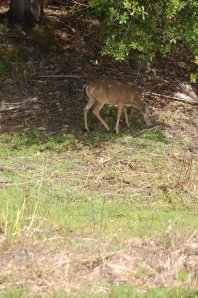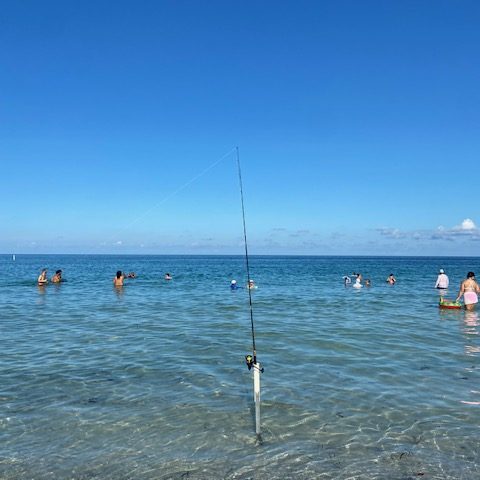December 2022 update: After a closure due to Hurricane Ian damage, Myakka River State Park has now reopened for day use and camping, according to its website. Boat tours, cabins, and some other parts of the park remain closed. Check out the park website before you go for more information.
Forget about actor Burt Reynolds. Or singer/entertainer Pitbull. Or singer Tom Petty or many others. No, Florida’s most famous celebrity is the famed alligator. And one place you can go to see alligators (if they’re not sunning themselves in your backyard or biting your local cop car’s front bumper, as some recent news stories have reported) is Myakka River State Park in Sarasota, Florida, located in the Southwest region of the state. A former coworker told me he visited Myakka Park one day and, on his arrival, saw 30 alligators grouped together and lying out in the sun. Now this I had to see.

Myakka River State Park is one of the state’s oldest parks and was developed in 1934. Its 58 square miles offers nearly 39 miles of hiking trails, camping, biking, canopy walking (we’ll explain that one in a little bit), scenic driving, tram tours, and even some gator tasting at its restaurant. However, a unique way to discover what the park has to offer is by taking an airboat tour. If you read Florida Culture’s last entry, Airboat Nation, you learned about a personalized airboat tour in Central Florida. The Myakka Park airboat tour, taken on the “Myakka Maiden”, is one of the biggest airboats created, seating approximately 30. (The ride costs $12/person; park entry is $6/car.)
 The airboat tour guide, Robert, a middle-aged man wearing a Crocodile Dundee-type hat, regales visitors with alligator lore. Between 500 to 1,000 gators live in the Myakka River, which at its deepest point is seven feet. Most gators lie on the bottom of the surface and can stay submerged without air for up to six hours, our guide tell us. Additionally, 2,500 vultures live at the park, not to mention various other birds and animals, and the lake is home to 30 varieties of fish, including the usual bass and catfish but also tilapia, which is considered an invasive species there.
The airboat tour guide, Robert, a middle-aged man wearing a Crocodile Dundee-type hat, regales visitors with alligator lore. Between 500 to 1,000 gators live in the Myakka River, which at its deepest point is seven feet. Most gators lie on the bottom of the surface and can stay submerged without air for up to six hours, our guide tell us. Additionally, 2,500 vultures live at the park, not to mention various other birds and animals, and the lake is home to 30 varieties of fish, including the usual bass and catfish but also tilapia, which is considered an invasive species there.
 Although I did not spot a mound of 30 gators as my former coworker did, you do indeed see your share of gators at Myakka Park. “There’s a gator at 9 o’clock,” Robert said–and like tourists on a double decker bus in Manhattan, visitors stood up and craned their necks and cameras to get a good shot–despite Robert’s warnings to not stand as the airboat has no brakes.
Although I did not spot a mound of 30 gators as my former coworker did, you do indeed see your share of gators at Myakka Park. “There’s a gator at 9 o’clock,” Robert said–and like tourists on a double decker bus in Manhattan, visitors stood up and craned their necks and cameras to get a good shot–despite Robert’s warnings to not stand as the airboat has no brakes.
One gator we saw was Fred, a 13 footer who Robert tells us stubbornly protects his territory, only letting an occasional female stay nearby. We also learn that female gators will lay up to 30 eggs in or around the month of June. However, once born, only three out of 100 gators will survive to seven years old, which is their breeding age.
Robert also fills us in a bit on crocodiles, which are larger and aggressive compared to the usually shy alligator. Although crocodiles usually stay in South Florida, some have been spotted as far north as Naples and even Englewood, he says.
In addition to gator spotting, the airboat ride, about an hour long, took us through lilypads, swamp cabbage, and provided numerous bird sightings.
After (or before) your airboat ride, you may want to check out Myakka Park’s canopy, a 70-foot high view of trees, wetlands, and wildlife around the park. It’s a scenic view, although on the day I went, I didn’t expect to see much wildlife thanks to the large and loud group in front of me. “Betty, we’re 67 feet in the air!” shouted one lady to another, as she climbed the steps up the tower to the canopy.
Myakka State Park: March 2013 Update



 Our recent return to Myakka State Park found it filled with tourists and locals alike camping, birdwatching, biking, and generally enjoying Myakka Park’s natural beauty. Tip: Come early if it’s in season and you want to do the airboat ride. We arrived at 11:30 a.m., but the next two boat rides close to that time were full. So, we opted instead for a tram ride ($12 for adults, $6 for children).
Our recent return to Myakka State Park found it filled with tourists and locals alike camping, birdwatching, biking, and generally enjoying Myakka Park’s natural beauty. Tip: Come early if it’s in season and you want to do the airboat ride. We arrived at 11:30 a.m., but the next two boat rides close to that time were full. So, we opted instead for a tram ride ($12 for adults, $6 for children).
After eating gator bites and a veggie burger at the crowded cafe/gift store (for the gift store, think Cracker Barrel meets gator kitschy heaven), we waited for the tram ride. The boat ride quite possibly has more gator sightings, but the hour-long tram ride will give you a pleasant land-based tour of the park’s history. We spotted an 11-foot female alligator (nicely camouflaged–see the swampy image above) and one of her babies, a deer who had no fear of us (deer have never been hunted in the park), and a wild turkey. We later spotted two hogs, which have a bad reputation for destroying parkland (and land in general). Our guide told us the pink/white growth on the trees (see the image above to the right of the gator image) is an indication of the park’s clean air.
Despite the crowds, we still think the park’s an awesome place to go for gator spotting or a return to nature–leave your cell phones behind if you can but take the cameras.

Leave a comment